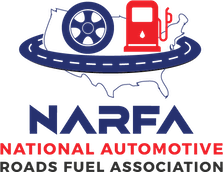Every year, business owners walk into their health insurance renewal meetings expecting a fair review, and walk out facing another unexplained increase.
This year, change that.
Instead of nodding through another presentation from your broker, take control with these seven critical questions. Each one uncovers hidden costs, exposes broker incentives, and helps you negotiate smarter during your employee benefits renewal meeting.
At NARFA, we believe transparency drives savings. With over 95 years serving industries like automotive, roads, fuel plus businesses with fleets of 5 or more vehicles, we have seen how informed business owners take control of their renewals and their costs. Ask the right questions, and you will see immediate opportunities to reduce your small business health insurance costs while improving employee benefits.
Quick Summary: 7 Questions That Will Change Your Renewal Meeting
Before you sign another renewal, ask these questions. They reveal hidden costs, expose broker games, and put you back in control of your healthcare spend.
- Show me my actual claims data.
- What percentage of my premium paid for care?
- If claims drop, do my rates drop too?
- Why am I pooled with unrelated companies?
- What alternative funding options exist?
- How does my industry compare to my rates?
- What are you doing now to lower my costs next year?
Ask these seven, and you will know exactly who is working for you and who is not.
Question 1: Can You Show Me My Actual Claims Data for the Last 3 Years?
Why it matters
You cannot manage what you cannot measure. Without detailed claims data analysis, you are making renewal decisions blindfolded. Many brokers provide summaries or percentages, but only your full claims data reveals the real cost drivers such as chronic conditions, out-of-network use, or preventable high-cost claims.
What to look for
If your broker cannot or will not show you the data, ask why. Lack of transparency often hides inefficiencies or inflated renewals.
How NARFA helps
NARFA provides complete visibility into every claim and trend, helping you identify cost-saving opportunities before renewal season. Our members use this insight to negotiate fairly and avoid overpaying year after year.
Question 2: What Percentage of My Premium Went to Actual Medical Care?
Why it matters
When you pay your monthly premium, you assume most of that money supports your employees’ healthcare. In reality, only about half usually does. The rest disappears into administrative fees, network access charges, and carrier overhead.
Understanding where your premium dollars go is the first step toward controlling costs. The benchmark should be at least 80 percent going to actual medical care. If your broker cannot provide a breakdown, you are funding inefficiency, not healthcare.
What to look for
Ask your broker for a full premium allocation report that shows exactly how much of your payment reached doctors, hospitals, and pharmacies. Transparency here exposes whether your renewal increases are justified or inflated by non-medical costs.
How NARFA helps
NARFA provides full transparency into every dollar. We focus on efficiency, not hidden fees, so our members know precisely where their money is going. This clarity helps identify opportunities to lower premiums and improve employee benefits without sacrificing quality of care.
Question 3: If My Claims Drop Next Year, How Much Will My Rates Go Down?
Why it matters
In every other part of business, good performance means lower costs. When productivity improves or waste decreases, you expect savings. Health insurance should work the same way. Yet many employers never see their premiums decrease even when their claims do.
Traditional insurance plans often work like a one-way ratchet: rates go up after a bad year but rarely go down after a good one. That system rewards carriers, not employers, and discourages the kind of preventive care and wellness efforts that reduce long-term costs.
What to look for
Ask your broker to explain how your claims experience influences your renewal rate. If the answer is vague or if you are told that “everyone’s rates are going up,” that is a warning sign. You deserve a program that recognizes positive performance and manages risk fairly.
How NARFA helps
NARFA uses experience-based rating. That means your group’s actual performance determines your renewal, not the claims of unrelated businesses. When your claims improve, you see the savings. This approach rewards the work you do to maintain a healthy, safe, and cost-conscious workforce.
Don’t leave your next renewal meeting to chance. Get NARFA’s free one-page cheat sheet and bring these seven critical questions with you.
[Download the 7 Questions Cheat Sheet (PDF)]
Question 4: Why Am I in a Pool With Companies That Have Nothing to Do With Mine?
Why it matters
Community-rated insurance pools combine many unrelated businesses into one large group. That might sound fair on the surface, but it often punishes companies that manage costs well. If your workforce is healthy and safety-focused, you should not be paying higher premiums to subsidize other employers with poor claims performance or higher-risk employees.
Pooling unrelated industries means your rates reflect the overall group average, not your actual results. You could run a well-managed operation with excellent safety and wellness programs, yet still face increases caused by the claims of unrelated companies.
What to look for
Ask your broker how your risk pool is structured and who you are grouped with. If the answer is vague or you are lumped into a generic small business category, you are likely paying for other companies’ claims. The right partner should build groups based on industry, workforce type, and historical claims data.
How NARFA helps
NARFA pools businesses within similar industries that share the same risk profile and commitment to managing costs. We believe companies that invest in safety and wellness deserve to see those efforts reflected in their rates. When your group performs well, you benefit directly.
Question 5: What Alternative Funding Options Have You Analyzed for My Business?
Why it matters
If your broker only mentions fully insured plans, you are not getting the full picture. Traditional insurance often limits flexibility and locks you into annual rate increases with little control over how your money is used.
Alternative funding strategies, such as level funding or self-funding hybrids, give employers more visibility and potential savings. These options require more analysis and expertise, but they can produce significant benefits when managed correctly. The right structure can stabilize cash flow, improve cost control, and return unused funds to your business.
What to look for
Ask your broker to compare funding models side by side, including the financial assumptions behind each. A broker who cannot explain how level funding or health savings account (HSA) strategies might fit your situation is not providing comprehensive advice. You deserve clear, data-backed comparisons that help you make informed decisions.
How NARFA helps
NARFA evaluates every funding approach to find the one that best fits your business. We analyze various options for you, taking into account your experience and data, to maximize value and reduce long-term costs. Our goal is simple: provide the right structure for your company’s unique needs, not a one-size-fits-all solution.
Question 6: How Does My Industry Experience Compare to What I’m Being Charged?
Why it matters
Every industry has its own risk patterns, workforce characteristics, and cost drivers. A construction company does not face the same health risks as a retail business, and a transportation firm operates under very different conditions than a tech startup. When carriers and brokers use generic pricing models, you can end up paying more than your fair share.
Industry-specific underwriting ensures that your rates reflect the realities of your business, not a broad market average. Without it, you may be subsidizing companies with very different claims experiences or workforce behaviors.
What to look for
Ask your broker whether your renewal rates are based on actual industry data or on a pooled average that includes unrelated sectors. If they cannot explain how your claims history compares with similar businesses, you are not receiving accurate or fair pricing. The right partner should understand your industry’s safety standards, labor profile, and regulatory environment.
How NARFA helps
With more than 95 years of experience serving our industries, NARFA knows how to evaluate risk accurately within these sectors. Our programs are designed around real industry data and proven performance trends, so your rates reflect how your business actually operates. This specialized approach ensures fairness, transparency, and stability year after year.
Question 7: What Are You Doing Right Now to Lower My Costs for Next Year?
Why it matters
Managing health insurance costs is not a once-a-year conversation. Many brokers disappear until renewal season, leaving you to face increases that could have been prevented months earlier. Effective cost control requires continuous analysis, proactive planning, and a partner who looks for savings all year long.
Waiting until renewal guarantees missed opportunities. By then, the data is old, trends are set, and options are limited. Continuous management allows you to identify high-cost claims early, promote preventive care, and negotiate better outcomes before the next renewal cycle begins.
What to look for
Ask your broker what actions they are taking each quarter to manage costs and improve plan performance. Look for regular claims reviews, wellness recommendations, and targeted programs that reduce avoidable expenses. A broker who only calls at renewal time is not managing your plan; they are maintaining their commission.
How NARFA helps
At NARFA, cost management is an ongoing process. We analyze claims trends throughout the year, identify emerging cost drivers, and recommend strategies to keep expenses under control. Our proactive approach helps businesses stay ahead of increases and continuously improve benefit performance, not just react to it once a year.
When They Can’t Answer, You Have Your Answer
Good brokers welcome tough questions. They are transparent, confident, and ready to back up their recommendations with data.
Bad brokers deflect, delay, or hide behind vague answers. If you hear phrases like:
- “That’s proprietary information.”
- “Trust us, we got you the best deal.”
- “Everyone’s rates are going up.”
- “Let me get back to you on that.”
It is time to reconsider who is really working for you.
The NARFA Difference
We believe in transparency, accountability, and proof. For nearly a century, NARFA has helped businesses across various industries take control of their employee benefits. When you ask questions, you get clear, data-driven answers, not excuses.
What Happens Next
- Bring these seven questions to your next renewal meeting.
- Listen closely to how your broker responds.
- Compare their answers to what NARFA provides.
Then decide whether you are getting the value, transparency, and partnership your business deserves.
If you are ready for answers instead of excuses, call NARFA at 800-258-5318 or sign up to get a free quote today.
See the difference that real transparency and proactive management make.
Recent Posts
Beyond Paperwork: How Your Benefits Administrator Becomes Your 2025 Benefits Strategy Partner
The 2025 Reality: Why Off-the-Shelf Plans Aren't Working Every year, the renewal notice arrives with a painful rate increase. For small and mid-sized businesses, this [...]
Due Diligence Checklist: How Strong Corporate Governance Increases Business Valuation
Whether you are raising capital, securing financing, or preparing for a sale, your company’s corporate structure and governance tell a story. That story can either [...]
7 Health Insurance Renewal Questions Every Business Owner Must Ask
Every year, business owners walk into their health insurance renewal meetings expecting a fair review, and walk out facing another unexplained increase. This year, change [...]




